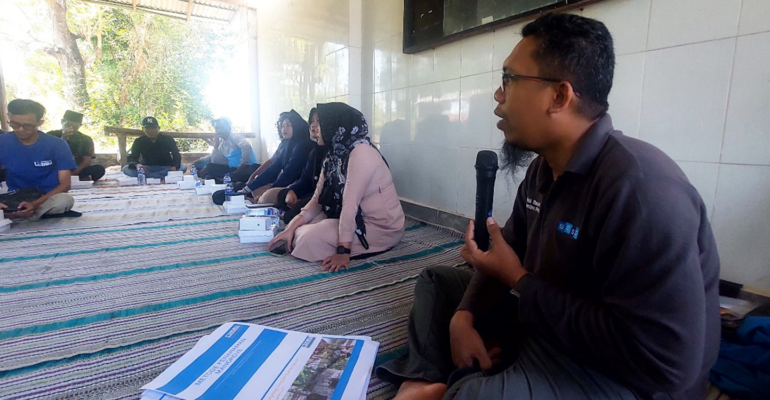IPB University Introduces Sonneratia sp Mangrove Nursery Method to Strengthen Rehabilitation Efforts in Sumenep

IPB University lecturers recently introduced Sonneratia alba mangrove nursery methods at Kundang Wetan Beach, Tanjung Village, Saronggi District, Sumenep Regency, Madura. This activity is part of a series of IPB University’s Dosen Pulang Kampung (Dospulkam) program.
According to Dr Fery Kurniawan, one of the IPB University lecturers who is a member of the Dospulkam team, this program is the right step to overcome the challenge of the large use of Rhizophora sp mangroves which has an impact on the lack of diversity of mangrove species planted during rehabilitation activities.
“The Sonneratia alba nursery aims to overcome the problem of Rizhophoranization in mangrove rehabilitation activities. In fact, some areas are dominated by one strong type, and it is not of the Rhziophora sp type,” he said.
After touring Kundang Wetan Beach, the most common type of mangrove is Sonneratia alba. The activity was attended by the Chairman of Tanjung Village, SDN 1 Tanjung teachers, Reng Paseser Community Supervisory Group (Pokmaswas), and community leaders.
Dr Fery explained that healthy and quality Sonneratia alba seedlings are selected and planted into poly bags that have been filled with soil. These seedlings will later be given fertilization treatment after growing 3-4 leaves.
“The planting media used is also slightly different from the Rhizophora sp species, if Sonneratia alba needs muddy media. This is possible for mangrove seeds to break the skin and accelerate germination,” explained the Lecturer of Aquatic Resource Management (MSP) IPB University.
“Not only that, the roots of this species can trap sediment or sand, so that abrasion no longer occurs,” explained Dr Fery who is also a senior researcher at the Center for Coastal and Marine Resources Studies (PKSPL) IPB University when delivering material to the participants of the activity.
Furthermore, nursery activities will be continued when the Sonneratia fruit is ready as a follow-up activity. These seedlings will be monitored and cared for their growth. They will even be propagated in line with the Sonneratia fruiting season. When the nursery was conducted, only a few mangrove fruits were ripe and suitable to be used as seeds.
The secretary of Pokmaswas Reng Paseser, Fatlillah, also expressed her enthusiasm for this activity. “We are very enthusiastic, because our nursery is not only Rhizophora sp, but there are other species being seeded,” she said.
“Hopefully, the Sonneratia alba species will grow well and many people will realize to use this species also during mangrove planting activities, no longer dominated by the Rhizophora sp species,” he added while preparing the planting media.
With support from the community and an innovative approach to planting, it is hoped that the mangrove ecosystem in Tanjung Village will recover and thrive, providing long-term benefits for the environment and local community. (*/Rz) (IAAS/HLF)



